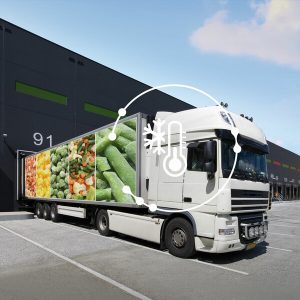Ensuring the Integrity of Cold Chain Products: A Comprehensive Guide to Transportation
In the realm of transporting temperature-sensitive goods, the cold chain plays a pivotal role in maintaining the integrity and quality of products. From pharmaceuticals to perishable foods, a seamless cold chain is crucial to prevent spoilage, maintain efficacy, and ensure consumer safety. This article delves into the intricacies of transporting cold chain products, covering essential aspects to guarantee the preservation of goods throughout their journey. How do you transport cold chain products?
The Basics of Cold Chain Management
Before delving into transportation specifics, it’s crucial to understand the fundamentals of cold chain management. The cold chain refers to a temperature-controlled supply chain that encompasses the entire journey of perishable goods from production to consumption. This chain typically involves the storage, handling, and transportation of products within a specific temperature range to preserve their quality.
For cold chain products, maintaining the right temperature is paramount. Deviations from the required temperature range can lead to product degradation, rendering them unsafe or ineffective. Therefore, effective cold chain management involves meticulous planning, monitoring, and adherence to stringent temperature controls.
Key Considerations for Cold Chain Transportation
Transporting cold chain products presents unique challenges, and a misstep at any stage can compromise the entire supply chain. Here are key considerations to ensure the successful transportation of temperature-sensitive goods:
Temperature-Controlled Vehicles

Investing in temperature-controlled vehicles is a fundamental requirement for transporting cold chain products. These vehicles are equipped with advanced refrigeration or heating systems, depending on the specific temperature needs of the products. From trucks to containers, these vehicles provide a controlled environment to safeguard goods against temperature fluctuations.
Proper maintenance of these vehicles is essential to avoid breakdowns that could jeopardize the cold chain. Regular checks on refrigeration systems, insulation, and temperature monitoring devices are critical to ensure the integrity of the transported products.
Temperature Monitoring and Data Logging
Real-time temperature monitoring is a non-negotiable aspect of cold chain transportation. Advanced sensors and monitoring devices track temperature changes during transit, allowing for swift intervention if deviations occur. Data logging systems record temperature data throughout the journey, providing a comprehensive overview of the conditions the products were exposed to.
In the event of a temperature excursion, having a robust monitoring system allows stakeholders to trace the issue and take corrective actions promptly. This level of visibility is indispensable for ensuring product quality and compliance with regulatory requirements.
Packaging Solutions
Choosing the right packaging is a critical factor in preserving the cold chain. Insulated packaging, often equipped with cooling or heating elements, helps maintain the desired temperature during transit. Packaging should be tailored to the specific needs of the product, considering factors such as sensitivity to light, humidity, and external temperature variations.
Furthermore, packaging should be designed to withstand the rigors of transportation, protecting products from physical damage while maintaining temperature integrity. Collaborating with packaging experts can help tailor solutions that meet the unique requirements of different cold chain products.
Regulatory Compliance
Compliance with regulations and standards is paramount in the cold chain industry. Different products may be subject to varying regulatory frameworks, necessitating a thorough understanding of regional and international guidelines. Adherence to these standards ensures that the transported products meet safety and quality requirements.

Staying updated on regulatory changes and implementing best practices for compliance minimizes the risk of legal issues and enhances the reputation of all stakeholders involved in the cold chain.
Challenges and Solutions
Despite advancements in cold chain technology, challenges persist in ensuring the seamless transportation of temperature-sensitive products. Here are some common challenges and proposed solutions:
Global Logistics and Cross-Border Transport
Transporting cold chain products across borders introduces complexities related to customs clearance, varying regulations, and different infrastructure standards. To overcome these challenges, collaboration between logistics providers, regulatory bodies, and manufacturers is crucial.
Implementing standardized documentation and digital tracking systems can streamline the customs process, ensuring that products move efficiently across borders. Additionally, fostering international partnerships can facilitate the exchange of information and best practices to enhance global cold chain logistics.
Last-Mile Delivery
The last mile of delivery poses unique challenges in maintaining the cold chain. Shorter transit times and multiple stops can increase the risk of temperature deviations. Utilizing advanced route optimization software, combined with temperature-controlled vehicles for last-mile delivery, can help mitigate these challenges. https://commgen.com.au/2023/12/30/how-high-off-the-ground-is-a-loading-dock/
Moreover, investing in innovative last-mile solutions, such as drone or autonomous vehicle deliveries, can further reduce transit times and enhance the overall efficiency of cold chain logistics.
Conclusion
Transporting cold chain products requires a meticulous and integrated approach to guarantee the preservation of product quality and safety. From temperature-controlled vehicles to advanced monitoring systems, every element of the cold chain plays a crucial role in the successful transportation of temperature-sensitive goods.
By addressing key considerations, implementing cutting-edge technologies, and staying abreast of regulatory requirements, stakeholders in the cold chain industry can build a robust and reliable transportation infrastructure. In doing so, they contribute not only to the longevity and effectiveness of the transported products but also to the overall safety and well-being of consumers worldwide.

Recent Comments